Based on this answer:
import matplotlib.pyplot as plt
from mpl_toolkits.mplot3d import Axes3D
from matplotlib.patches import FancyArrowPatch
from mpl_toolkits.mplot3d import proj3d
import numpy as np
# interactive mode off, can [normally] be safely removed
plt.ioff()
# define an arrow class:
class Arrow3D(FancyArrowPatch):
def __init__(self, start=[0,0,0], end=[1,1,1], *args, **kwargs):
if "arrowstyle" not in kwargs:
kwargs["arrowstyle"] = "-|>"
if "mutation_scale" not in kwargs:
kwargs["mutation_scale"] = 20
if "color" not in kwargs:
kwargs["color"] = "k"
FancyArrowPatch.__init__(self, (0,0), (0,0), *args, **kwargs)
xs = [start[0], end[0]]
ys = [start[1], end[1]]
zs = [start[2], end[2]]
self._verts3d = xs, ys, zs
def draw(self, renderer):
xs3d, ys3d, zs3d = self._verts3d
xs, ys, zs = proj3d.proj_transform(xs3d, ys3d, zs3d, renderer.M)
self.set_positions((xs[0],ys[0]),(xs[1],ys[1]))
FancyArrowPatch.draw(self, renderer)
def WireframeSphere(centre=[0.,0.,0.], radius=1.,
n_meridians=20, n_circles_latitude=None):
"""
Create the arrays of values to plot the wireframe of a sphere.
Parameters
----------
centre: array like
A point, defined as an iterable of three numerical values.
radius: number
The radius of the sphere.
n_meridians: int
The number of meridians to display (circles that pass on both poles).
n_circles_latitude: int
The number of horizontal circles (akin to the Equator) to display.
Notice this includes one for each pole, and defaults to 4 or half
of the *n_meridians* if the latter is larger.
Returns
-------
sphere_x, sphere_y, sphere_z: arrays
The arrays with the coordinates of the points to make the wireframe.
Their shape is (n_meridians, n_circles_latitude).
Examples
--------
>>> fig = plt.figure()
>>> ax = fig.gca(projection='3d')
>>> ax.set_aspect("equal")
>>> sphere = ax.plot_wireframe(*WireframeSphere(), color="r", alpha=0.5)
>>> fig.show()
>>> fig = plt.figure()
>>> ax = fig.gca(projection='3d')
>>> ax.set_aspect("equal")
>>> frame_xs, frame_ys, frame_zs = WireframeSphere()
>>> sphere = ax.plot_wireframe(frame_xs, frame_ys, frame_zs, color="r", alpha=0.5)
>>> fig.show()
"""
if n_circles_latitude is None:
n_circles_latitude = max(n_meridians/2, 4)
u, v = np.mgrid[0:2*np.pi:n_meridians*1j, 0:np.pi:n_circles_latitude*1j]
sphere_x = centre[0] + radius * np.cos(u) * np.sin(v)
sphere_y = centre[1] + radius * np.sin(u) * np.sin(v)
sphere_z = centre[2] + radius * np.cos(v)
return sphere_x, sphere_y, sphere_z
def find_most_distants(points, center=[0.,0.,0.], tol=1e-5):
"""
Finds and returns a list of points that are the most distante ones to
the center.
Parameters
----------
points: list
A list of points (see center to know what a point is)
center: array like
A point, defined as an iterable of three numerical values.
"""
# make central point an array to ease vector calculations
center = np.asarray(center)
# find most distant points
max_distance = 0
most_distant_points = []
for point in points:
distance = np.linalg.norm(center-point)
if abs(distance - max_distance) <= tol:
most_distant_points.append(point)
elif distance > max_distance:
most_distant_points = [point]
max_distance = distance
return max_distance, most_distant_points
def list_of_points_TO_lists_of_coordinates(list_of_points):
"""
Converts a list of points to lists of coordinates of those points.
Parameter
---------
list_of_points: list
A list of points (each defined as an iterable of three numerical values)
Returns
-------
points_x, points_y, points_z: array
Lists of coordinates
"""
points_x = []
points_y = []
points_z = []
for point in list_of_points:
points_x.append(point[0])
points_y.append(point[1])
points_z.append(point[2])
return points_x, points_y, points_z
def function(central_point=[0.,0.,0.],
other_points=[[1., 2., 2.23],
[2., 3., 3.6],
[-3., 4., 5.]],):
"""
Draws a wireframe sphere centered on central_point and containing all
points in other_points list. Also draws the points inside the sphere and
marks the most distant ones with an arrow.
Parameters
----------
central_point: array like
A point, defined as an iterable of three numerical values.
other_points: list
A list of points (see central_point to know what a point is)
"""
# find most distant points
max_distance, most_distant_points = find_most_distants(other_points, central_point)
#prepare figure and 3d axis
fig = plt.figure()
ax = fig.gca(projection='3d')
ax.set_aspect("equal")
#draw sphere
ax.plot_wireframe(*WireframeSphere(central_point, max_distance), color="r", alpha=0.5)
# draw points
ax.scatter(*list_of_points_TO_lists_of_coordinates(other_points))
# draw arrows to most distant points:
for extreme_point in most_distant_points:
ax.add_artist(Arrow3D(start=central_point, end=extreme_point))
fig.show()
if __name__ == '__main__':
function([0,0,0], 2*np.random.rand(50,3)-1)
# make a list with equally most distant point:
repeated_max_list = 2*np.random.rand(10,3)-1
distance, points = find_most_distants(repeated_max_list)
repeated_max_list = np.concatenate((repeated_max_list,points))
repeated_max_list[-1][0] = -repeated_max_list[-1][0]
repeated_max_list[-1][1] = -repeated_max_list[-1][1]
repeated_max_list[-1][2] = -repeated_max_list[-1][2]
function([0,0,0], repeated_max_list)

